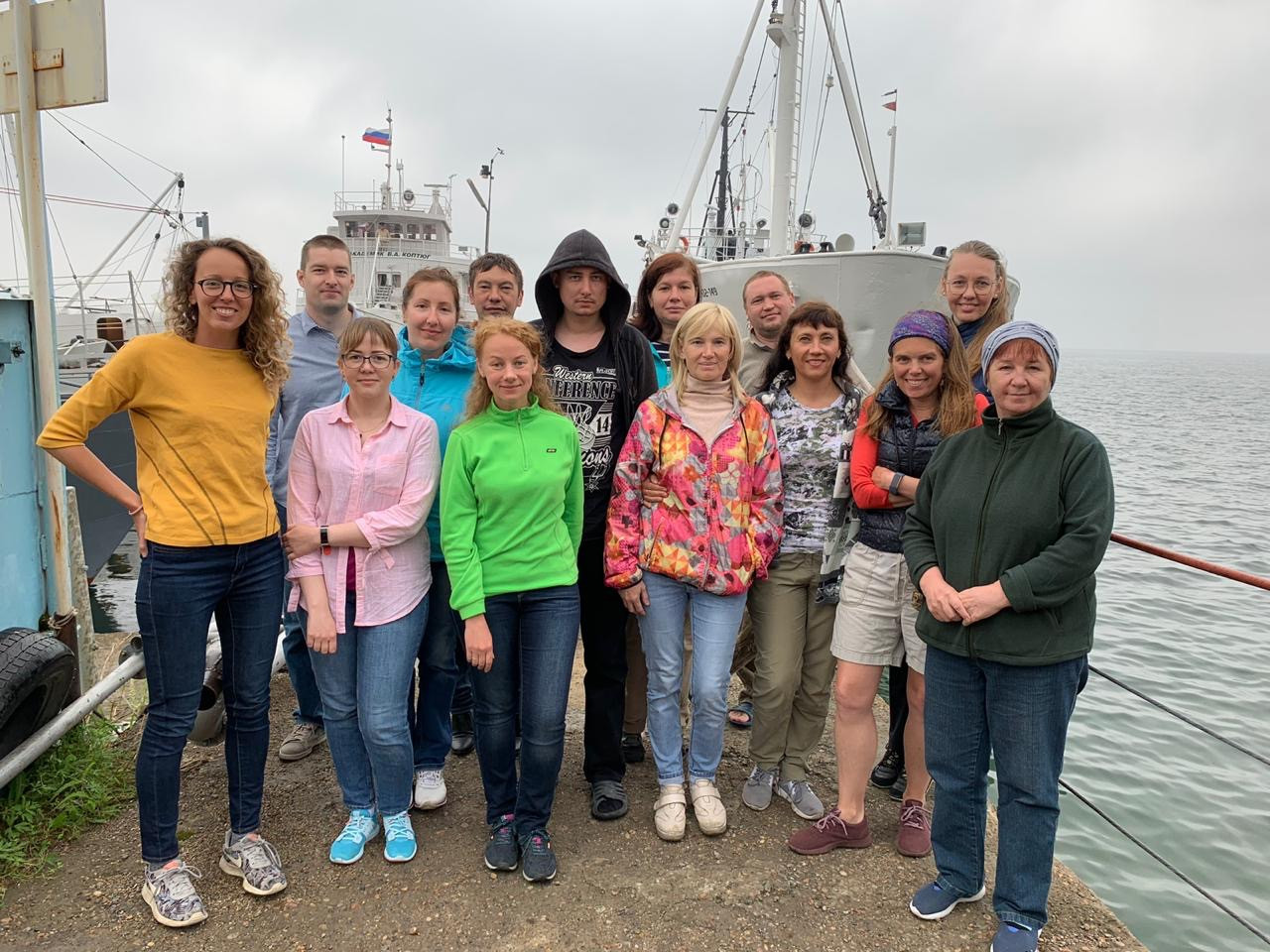Expedition on board RV “G.Yu. Vereshchagin”, July 12 –22, 2019.
The expedition within the framework of the programme “Study of the Influence of Mud Volcanoes and Methane Seeps on the Biological Communities of the Abyssal Zone of Lake Baikal” was carried out onboard RV “G.Yu. Vereshchagin”, July 12 –22, 2019 in the Southern, Central and Northern Baikal.
The aim of the expedition was to study the biogeochemical cycles of methane and other hydrocarbons in the bottom sediments of the underwater discharge areas, considering the composition of gases and fluids as well as the associated microbial processes; and to assess the self-clearing ability of Lake Baikal near oil seep.
The planned fieldworks were fully fulfilled at 13 stations.
Bottom sediments and water were sampled from three basins of Lake Baikal, using various samplers (BC, GC and Grf, R). pH, Eh and oxygen were measured in each grab raised to the surface (Grf) and benthic tube (BC). To determine methane concentrations, 52 samples were taken from the water column as well as 112 samples of bottom sediments. To determine the chemical composition of pore waters, approximately 300 samples of bottom sediments were taken from 20 cores. Near the hot sulphide spring in Zmeyovaya bay, mats of the colourless sulphur bacteria Thiothrix were sampled for molecular biological analysis, microscopy and cultivation. To extract the total DNA, 60 samples of bottom sediments containing gas hydrates, carbonates, oil, and ferromanganese crusts as well as 21 water column samples were taken. The specimens of aquatic invertebrates (amphipods, ostracods and molluscs) were collected to search for ectosymbionts and ectosymbiotic consortia near discharges of hydrocarbon gases and mineralized fluids as well as the hot sulphide spring of Zmeyovaya bay. At two stations of Central and Northern Baikal, there were ferromanganese crusts, which chemical composition, formation age are planned to be studied, as well as taxonomic composition using biological methods. To determine the content of oil and other hydrocarbons, assess the number of oxygen-oxidizing microorganisms and obtain enrichment cultures for taxonomic identification and detection of microorganisms involved in anaerobic oil oxidation, the samples of bottom sediments and water column were taken near the oil seep Gorevoy Utes. The samples of the surface bottom sediments were taken for the cultivation of the representatives of methanotrophic bacteria and archaea of the phylum Thaumarchaeota. Near mud volcanoes Kedr and Malenky, the composition of microbial communities that provide anaerobic oxidation and methane formation was studied. At the same time, precipitation from the zone of carbonate formation was sampled for isotopic and mineralogical studies and well as identification of biomarkers.




